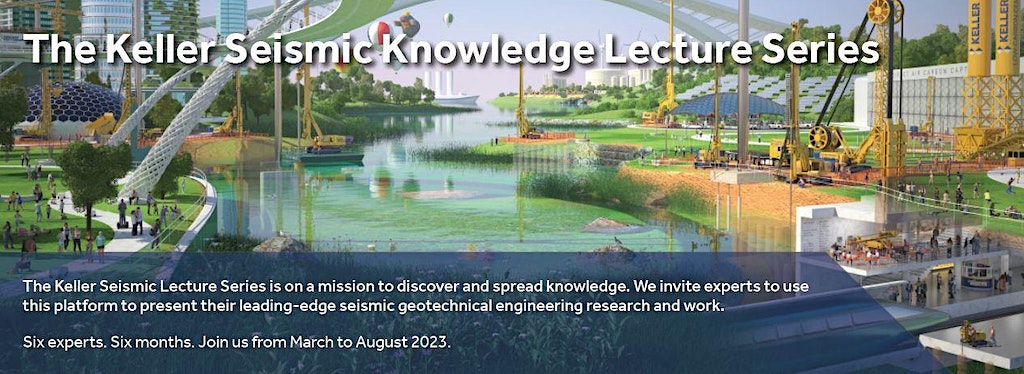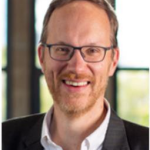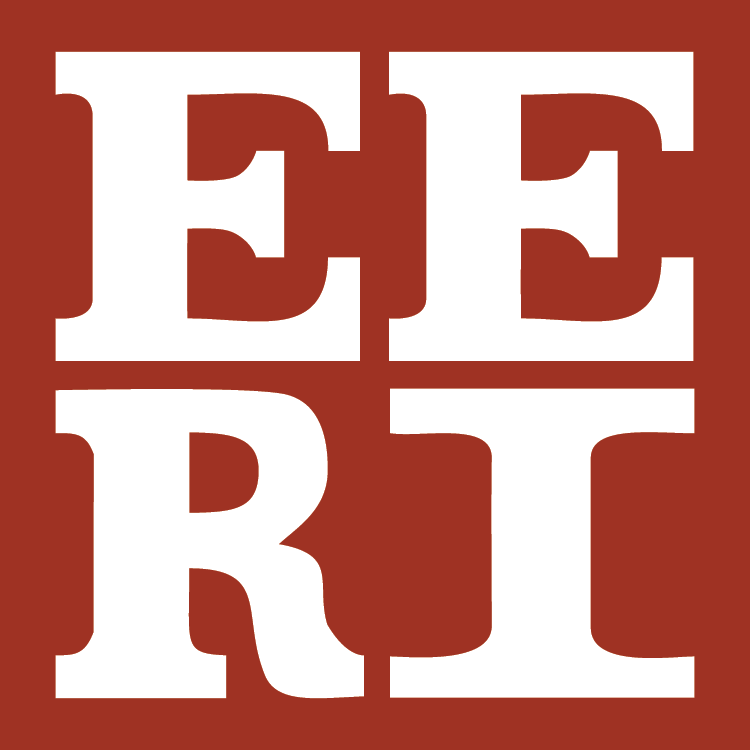The Keller Seismic Knowledge Lecture Series
June to August 2023
Virtual Webinars
Spend your summer with Keller Group! A longtime and valued supporter of EERI events, they are hosting a series of seismic seminars featuring geotechnical experts showcasing their novel research and work. Below is their remaining webinar schedule. You will earn 1 PDH credit per lecture for attending.

PROGRAM
June Lecture: Thursday, June 15th, 2023, 12pm-1pm PDT
Seismic Stability of PG&E’s Diablo Canyon Nuclear Power Plant
Jeff Bachhuber, C.E.G.
Click here to register.
Description: Jeff Bachhuber, C.E.G., will discuss the history of seismic studies and ongoing earthquake monitoring under the PG&E Long Term Seismic Program. The Diablo Canyon nuclear power plant generates 9% of California’s electric power and 20% of its carbon-free electricity. It is located in a seismically active area with a potential M7.5 earthquake. The seismic design of the plant is among the highest of any nuclear facility in the world and has a substantial safety margin. The plant has undergone multiple seismic studies, including a reassessment after the damages to the Fukushima nuclear power plant after the 2011 Tohoku earthquake.
July Lecture: Wednesday, July 19th, 2023, 12pm-1pm PDT
Application of the CPT to Evaluate Soil Liquefaction
Peter K. Robertson, Ph.D.
Click here to register.
Description: Peter K. Robertson, Ph.D., will present a brief overview of advances made in the evaluation of soil liquefaction using the CPT. Examples will be presented to illustrate how the CPT is used to evaluate both seismic and flow liquefaction. The presentation will also discuss the role of uncertainty and risk as it applies to liquefaction assessment.
August Lecture: Tuesday, August 15th, 2023, 12pm-1pm PDT
A New Probabilistic Approach to Liquefaction Susceptibility
Kevin Franke, Ph.D., PE,
Click here to register.
Description: Kevin Franke, Ph.D., PE, will present a new probabilistic procedure to assess liquefaction susceptibility and triggering for CPT-compatible soils. It eliminates the need for fines content adjustment, identifies a threshold for fine-grained soils not susceptible to liquefaction, and differentiates the liquefaction resistance of clean sands with varying mineralogy and compressibility. However, it may overpredict liquefaction-induced settlements if clean-sand volumetric strain models are inappropriately applied to clayey soils. Practical guidance is provided for handling clayey soils predicted to “liquefy.”
EERI Distinguished Lecture
From Ductility to Repairability: Evolution of Building Design in the Wake of the Christchurch Earthquake
A Joint Event with EERI UCSD
Tuesday, January 17, 2023
4pm-7pm
SME 248, University of California, San Diego
La Jolla, CA
New Zealand and many other countries around the world adopted ductility-based design concepts in the late 1970s and early 1980s. The adoption of these design concepts is likely the single most important advancement in our design philosophy in terms of protecting life safety in future earthquakes. Ductility, however, cannot be achieved without damage to the structure and its contents. Recent earthquakes have openly challenged the engineering community as to whether our focus on ductility has delivered what society intrinsically expects from its buildings during and after strong earthquakes. Recognizing that building design is best driven by observations from real earthquakes, we will use the 2011 Christchurch Earthquake as a case study to explore if it is time for another fundamental shift in our approach to building design; from ductility to repairability.
How we design and construct buildings will clearly influence building performance in future earthquakes, which will in turn influence outcomes for occupants (injuries and deaths), as well as for the buildings themselves (demolition, repairs, abandonment). But it is the economic, environmental and social impacts resulting (in part) from these human and building outcomes which leave a lasting impression on our communities. Managing these impacts from future earthquakes should be the driver behind future changes to how we design buildings. Eleven years after the Christchurch earthquake we are now in a better position to appreciate such impacts including business losses, insurance costs and delays, environmental impacts, urban blight, and wellbeing. We will review some of these impacts and reconsider if our building design targets are suitable for managing these impacts in future earthquakes. We argue a need to change our focus from just life-safety to serviceability in frequent earthquakes and repairability in design level ground motions. Component deformation limits for concrete buildings which enable structural repair without loss of structural safety will be discussed and the repairability of current structural designs will be assessed.
Click the above image on right to view event flyer.
REGISTRATION
Click here to register for the lecture.
PROGRAM
4:00pm – Reception (light snacks provided)
4:30pm – Distinguished Lecture
6:00pm – Reception at Dirty Birds (limited pizza provided)
SPEAKER
Professor Ken Elwood, University of Auckland
Auckland, New Zealand
Ken is a Professor in Earthquake Engineering at the University of Auckland, New Zealand. He is currently seconded to New Zealand Government as Chief Engineer (Building Resilience). Through this role, Ken champions the resilience of New Zealand’s built environment, by promoting collaboration between relevant research, policy, and practice players.
VENUE & PARKING
Room SME 248
University of California, San Diego
9500 Gilman Drive La Jolla, CA 92093
Click here to view directions to Room SME 248 and Gilman Parking Structure.

